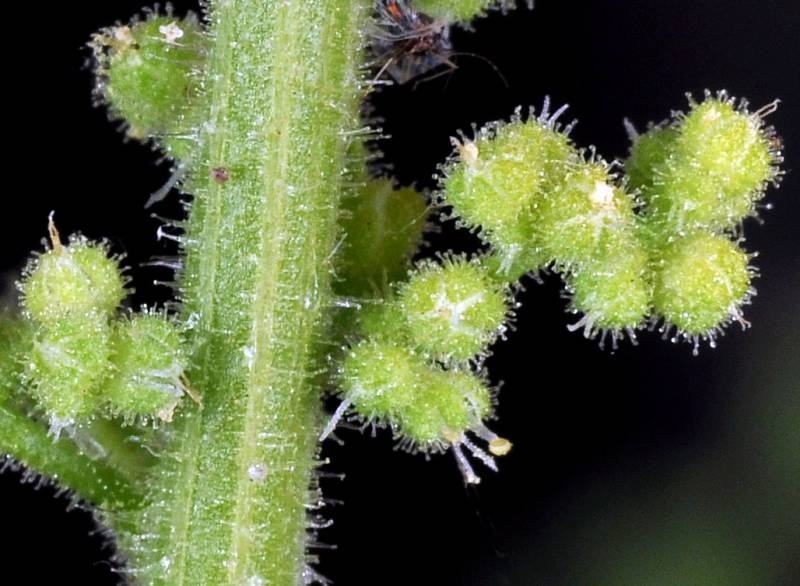Hosted by the University of Washington Herbarium, Burke Museum
Publication: Ukrayins’k. Bot. Zhurn., n. s. 59: 383. 2002.
Origin: Introduced from Eurasia
selected vouchers: WTU
Notes: The similar Eurasian and African species Chenopodium schraderiana Schult. should be sought as an adventive, acording to FNA. It has keeled perianth parts with nearly sessile glands, and a leafy inflorescence, compared to C. botrys.
FNA4: "Dysphania botrys is related to a species from Africa and southern Eurasia, D. schraderiana (Schultes) Mosyakin & Clemants, which may occur locally in North America as introduced. Dysphania schraderiana has distinctly keeled perianth segments with mostly sessile or subsessile glands. The general inflorescence in D. schraderiana is usually leafy almost to the top, distal cauline leaves are similar to proximal ones (in D. botrys distal leaves are normally much reduced, and the distal portion of the general inflorescence appears nearly leafless). H. A. Wahl (1954) reported that D. schraderiana (as Chenopodium schraderianum) had been grown in Ontario. He did not indicate that it had escaped."
References: (none)

